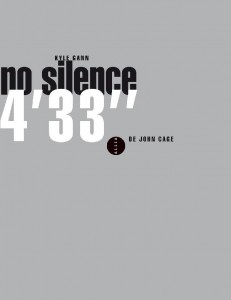I am told that my copy of the French translation of No Such Thing as Silence – titled No Silence: 4’33” de John Cage (Allia Editions) – is in the mail.
UPDATE: The French edition, which has arrived, is very classy, and is decorated with hundreds of photos of Cage, Tudor, Rauschenberg, Coomaraswamy, and others that weren’t in the more austere American edition. Perhaps I should just publish my Ives book in French, they seem to have the money.

